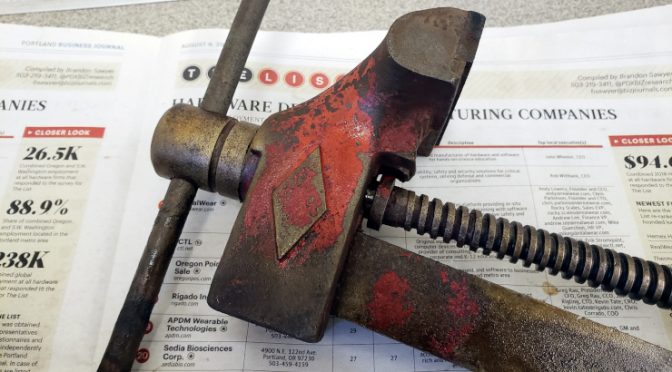WARNING: I don’t know what I’m doing!
On a whim I bought a rusty, Ace brand 3 1/2″ (say 90 mm) vise at a garage sale. I’ve watched a few vise restoration videos, so I think I have a chance at restoring it…
How it started: I’ve been watching a lot of Matthew Read’s excellent clock repair videos (Open Clock Club Archive, How to repair pendulum clocks, and How to Repair Pendulum Clocks – LIVESTREAM). Lately he’s been repairing an early 19th century clock, doing a lot of metalworking in the process. Inspired by that work – and needing a vise for my clockmaker’s bench – I decided to buy a rusty vise and attempt to restore it. This post covers the first step in that restoration.
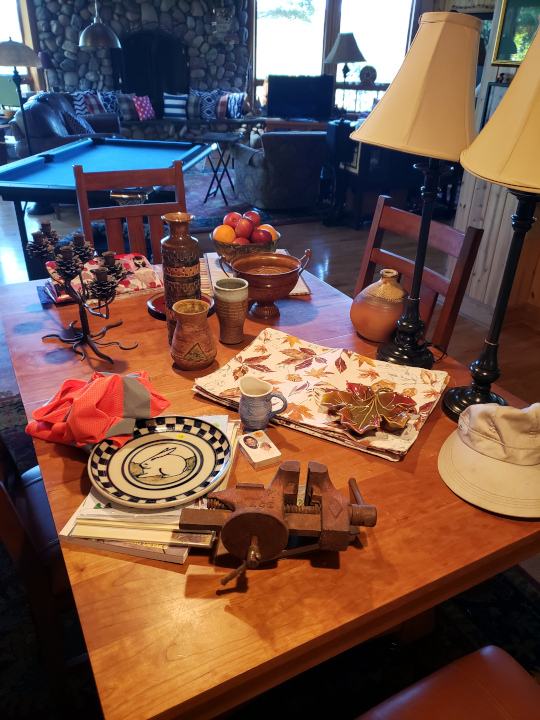
Don’t deny it; you’ve done this too. At a garage sale, something caught my eye; it was cheap; I didn’t examine it too closely. The result: a rusty vise that – I learned on later inspection – is missing its swivel base. I’m not sure what I’m going to do about that, but I knew how to begin the restoration.
Step 1: Disassemble the Vise. I was able to unscrew and remove the moveable jaw. I wasn’t able to remove the big lead screw from the moveable jaw (it was too coated with rust and mud) or remove the jaw faces (the screws are solidly frozen in rust).
Step 2: First rust removal and cleaning. Because I didn’t want to use my good rust remover (Evapo-Rust), I dumped the parts into a bin I filled with 1 part of 5% acidic vinegar to 2 parts of water. I only used this dilute mixture because I ran out of vinegar – on the hacky, McGyver path already. My understanding is that vinegar will remove rust, but it will also remove steel if given the chance. I should probably have used my Evapo-Rust instead.
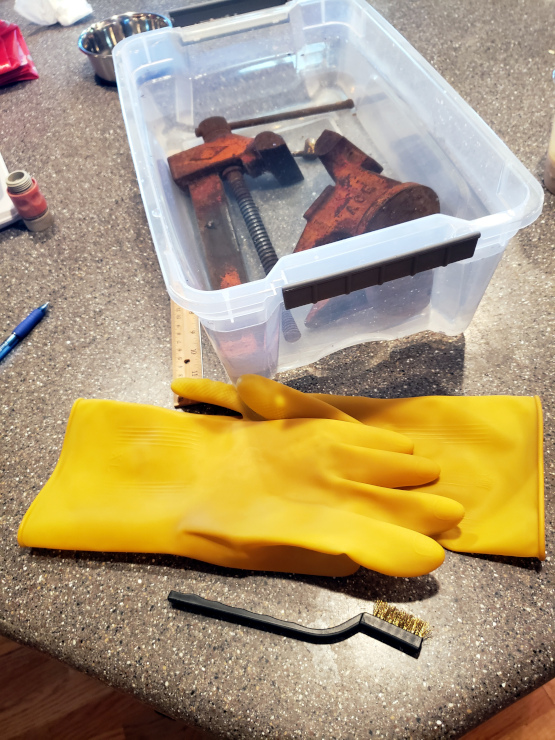
Over the next two days, I scrubbed the parts with a brass brush, removing a lot of dirt and a good portion of the rust – but nowhere near the amount of rust Evapo-Rust would remove.
I brushed the parts while they were submerged, in case the paint has lead in it (more on that in a later post).

After two days in the vinegar, the vise parts started to foam, so I rinsed the parts in cold water, dried them in the sun for a couple minutes, then sprayed everything with WD-40 to impede further rusting.

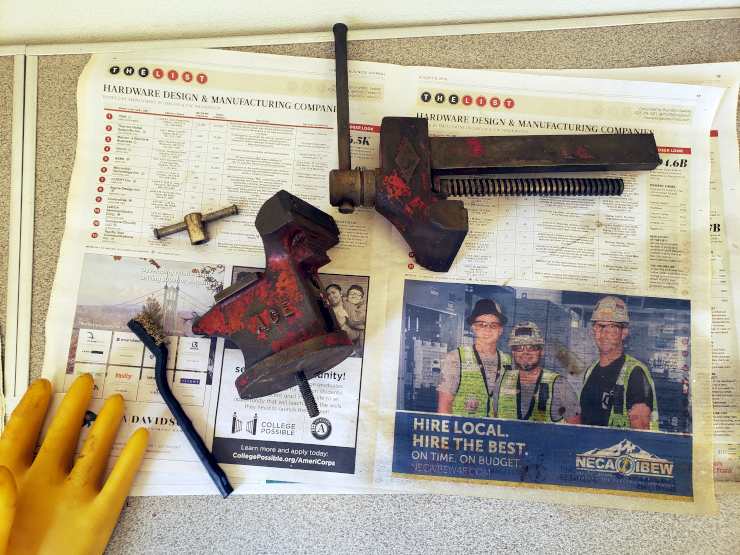
Next I (tried to) disassemble the parts a bit more. I hammered the end of the rust-frozen handle of the screw to free it.
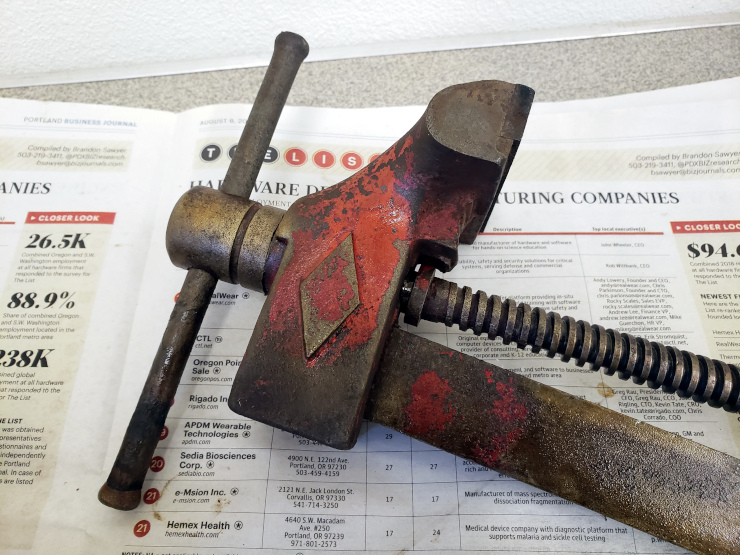
Then, to learn how to remove the screw from the moveable jaw, I watched a few vise restoration videos. I learned the thick washer (at the top of the screw thread in the above photo) keeps the screw from falling out of the moveable jaw. That washer is usually held in place with a clip or a cotter pin, but I couldn’t seem to find one on the screw, even after scrubbing most of the rust away.
So I decided to whack the screw to remove the thick washer. At first I tried to pry it off with an old screwdriver, but quickly realized that I could avoid bending the washer by simply whacking the end of the screw with a hammer (being careful not to damage the end of the screw).

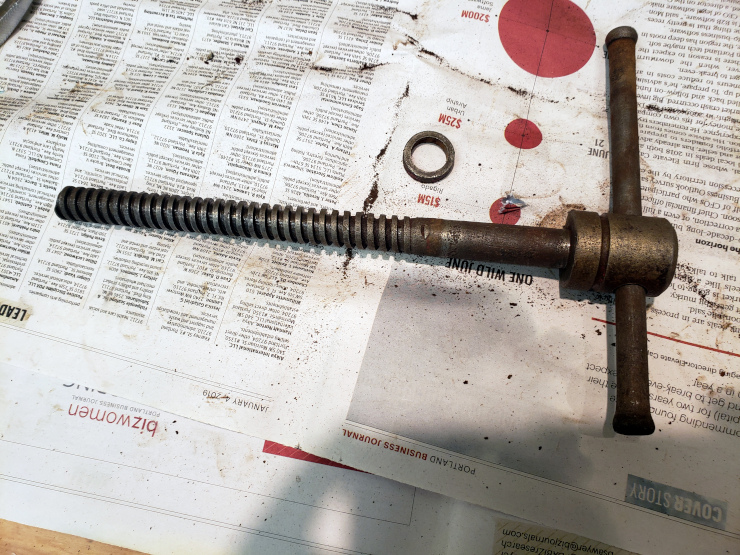
Looking carefully at the head-end of the thread, I saw the cuts that should hold an E-Clip (missing) that will hold the screw onto the moveable jaw. I’ll have to get a new clip as part of the restoration.
Update: on further examination, it looks to me like the washer was simply staked in using a cold chisel. That is, the washer was put on then metal from the lead screw’s end was cut and bent outward to hold the washer in place. A not very reversible process, but cheap. So when I’m reassembling the vise, I just need to re-stake the washer rather than trying to put in a clip.
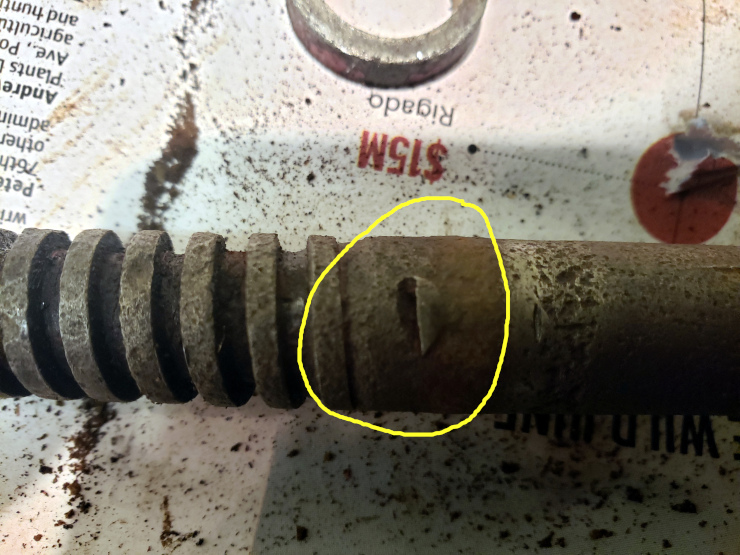
In the above photo you can see the damage from rust: the pits in the right end of the screw and in its threads.
I noticed enough rust remaining in the screw thread that I’ve decided to use a little Evapo-Rust to get rid of the remaining screw rust.
…more to come….

